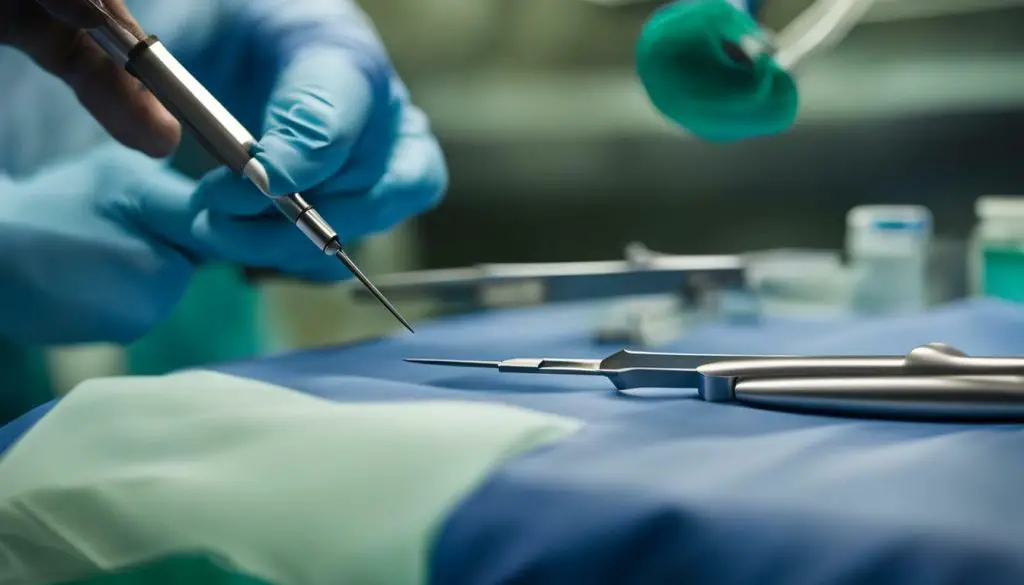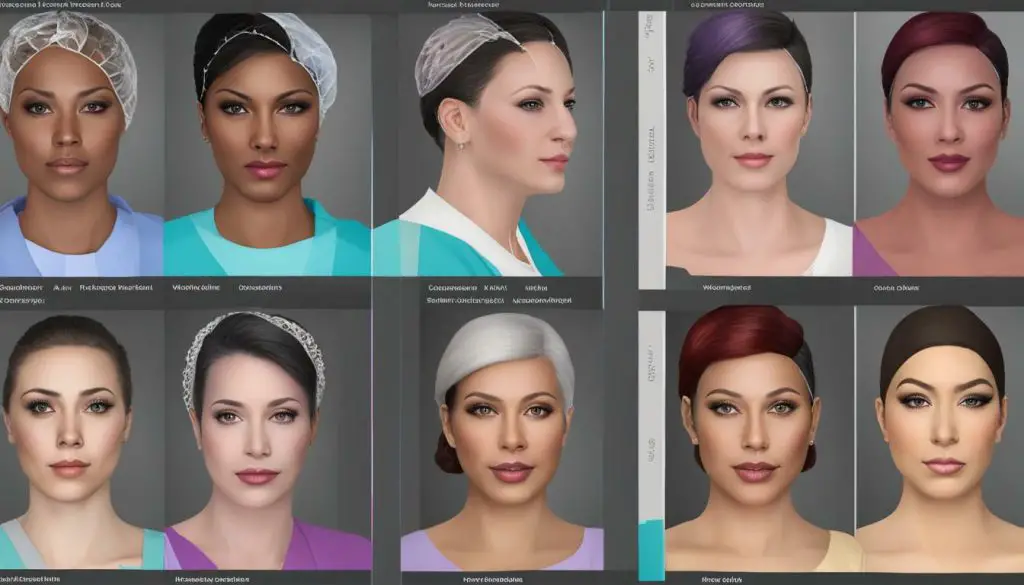Transgender surgery is a complex topic, and understanding which surgeries are considered easier requires a comprehensive examination of the available options. When it comes to transitioning, transgender individuals may choose to undergo various surgeries to align their physical appearance with their gender identity. However, it is essential to note that not all transgender individuals opt for surgery as part of their transition. The decision to undergo surgery is deeply personal and depends on individual preferences and needs.
Transgender surgery options vary depending on whether an individual is transitioning from male to female or female to male. For trans men, masculinizing surgeries may include chest masculinization, metoidioplasty, and phalloplasty, among others. On the other hand, trans women may consider feminizing surgeries such as breast augmentation, facial feminization surgery, and vaginoplasty.
It’s important to mention that the concept of “easier” surgeries may differ from person to person. Each surgery carries its own benefits, risks, and complexity, making it crucial for individuals to consult with healthcare professionals specializing in transgender healthcare to determine the best course of action for their transition journey.
While surgical interventions can play a significant role in a transgender person’s transition, it’s important to emphasize that not all transgender individuals choose to undergo surgery. Hormone therapy, which involves the administration of sex hormones and hormone blockers, can also be a crucial aspect of the physical transition. It’s important to provide comprehensive and inclusive healthcare for transgender individuals, addressing the knowledge gaps and disparities that currently exist in the medical community.
In the following sections of this article, we will delve deeper into the different types of transgender surgeries, explore the pros and cons of each, and discuss the factors to consider when making decisions about transgender surgery. Stay tuned!
Types of Transgender Surgeries
There are various types of transgender surgeries, and understanding the procedures involved is essential for individuals considering a physical transition. Transgender surgeries can be categorized into two main groups, depending on whether the individual is transitioning from male to female or female to male. Each category includes several specific surgeries that help align the individual’s physical appearance with their gender identity.
For trans men, masculinizing surgeries are available to enhance their masculine features. These surgeries may include chest masculinization, which involves the removal of breast tissue to create a flatter chest contour. Other procedures such as hysterectomy (removal of the uterus), metoidioplasty (lengthening of the clitoris), and phalloplasty (creation of a penis) can also be options for trans men.
On the other hand, trans women can undergo feminizing surgeries to enhance their feminine characteristics. Common procedures include breast augmentation to increase the size and shape of the breasts, facial feminization surgery to modify facial features, and vaginoplasty to create a vagina. Other surgeries such as voice feminization and tracheal shave (reduction of the Adam’s apple) can also be considered by trans women.
It is important to note that not all transgender individuals choose to undergo surgery as part of their transition. The decision to pursue surgery is a personal one that depends on individual preferences, needs, and circumstances. Some transgender individuals may opt for hormone therapy alone or combine it with surgical interventions. It is crucial for individuals to consult with experienced healthcare professionals who can provide tailored guidance and support throughout the transition process.
| Trans Masculine Surgeries | Trans Feminine Surgeries |
|---|---|
| Chest masculinization | Breast augmentation |
| Hysterectomy | Facial feminization surgery |
| Metoidioplasty | Penectomy |
| Oophorectomy | Scrotectomy |
| Phalloplasty | Orchiectomy |
Quotes:
“Transgender surgeries can be life-changing for individuals, helping them align their physical bodies with their true selves.”
Summary
Transgender surgeries encompass a range of procedures designed to align an individual’s physical appearance with their gender identity. For trans men, masculinizing surgeries like chest masculinization and phalloplasty can help enhance their masculine features. Trans women may choose feminizing surgeries such as breast augmentation and vaginoplasty to enhance their feminine characteristics. It’s important to note that not all transgender individuals choose to undergo surgery, and the decision should be based on individual preferences and needs. Consulting with knowledgeable healthcare professionals is crucial for personalized guidance throughout the transition process.

Trans women have a range of surgical options available, each presenting unique considerations and varying levels of complexity. These surgeries are designed to help transgender women achieve a physical appearance that aligns with their gender identity. One of the most common procedures pursued by trans women is breast augmentation. This involves the placement of breast implants to enhance the size and shape of the breasts, giving trans women a more feminine silhouette. It’s important to note that not all trans women choose to have surgical breast augmentation, as hormone therapy and other non-surgical options may be sufficient for achieving their desired results.
Another significant aspect of male to female transition is facial feminization surgery (FFS). This procedure involves a series of surgical interventions that can include procedures such as rhinoplasty (nose reshaping), brow lift, jaw reduction, and lip augmentation, among others. FFS helps transgender women achieve more feminine facial features by reshaping and contouring the face.
In addition to breast augmentation and facial feminization surgery, trans women may also consider a procedure known as vaginoplasty. This complex surgical procedure involves the creation of a neovagina, providing transgender women with a more anatomically female genitalia. Vaginoplasty is a major surgery with a lengthy recovery period and requires careful consideration and consultation with healthcare professionals. It is crucial for trans women to understand the risks and potential complications associated with this procedure before making a decision.
It’s important to remember that transgender surgeries are highly individual choices, and what may be considered “easier” for one person may not be the case for another. Each surgery comes with its own set of pros and cons, and the decision to undergo transgender surgery should always be made in consultation with experienced healthcare professionals who specialize in transgender healthcare. The ultimate goal is to provide transgender individuals with safe, accessible, and effective options in order to support their overall well-being and facilitate their journey towards aligning their physical appearance with their gender identity.
| Surgery | Considerations | Level of Complexity |
|---|---|---|
| Breast Augmentation | Enhances breast size and shape | Low to moderate |
| Facial Feminization Surgery | Reshapes and contours the face | High |
| Vaginoplasty | Create a neovagina | High |
Female to Male Surgeries
Trans men have a variety of surgeries to choose from, and understanding the complexities and potential ease of each procedure is crucial in making informed decisions. These surgeries are aimed at aligning the physical characteristics of the body with the male gender identity. It is important to note that not all trans men opt for surgical interventions, as each person’s transition journey is unique and personal.
One common surgical procedure for trans men is chest masculinization, also known as “top surgery.” This procedure involves the removal of breast tissue to create a flatter, more masculine chest contour. It can greatly enhance body confidence and alleviate gender dysphoria.

In addition to chest masculinization, other surgeries may include hysterectomy (removal of the uterus), oophorectomy (removal of the ovaries), metoidioplasty (lengthening of the clitoris), phalloplasty (creation of a penis), and scrotoplasty (creation of a scrotum). It’s important to note that the complexity and ease of these procedures can vary depending on individual factors such as overall health, anatomical considerations, and personal goals.
| Surgery | Procedure | Complexity | Ease |
|---|---|---|---|
| Chest Masculinization | Removal of breast tissue | Medium | High |
| Hysterectomy | Removal of the uterus | Medium | Moderate |
| Oophorectomy | Removal of the ovaries | Medium | Moderate |
| Metoidioplasty | Lengthening of the clitoris | High | Low |
| Phalloplasty | Creation of a penis | High | Low |
| Scrotoplasty | Creation of a scrotum | High | Low |
It is important for trans men to have open discussions with their healthcare providers and seek guidance from experienced gender-affirming surgeons to fully understand the potential risks and benefits associated with each surgery. Informed decision-making, in collaboration with medical professionals, can help ensure the best possible outcomes and overall satisfaction with the chosen surgical interventions.
Conclusion
Female to male surgeries offer a range of options for trans men seeking physical alignment with their gender identity. From chest masculinization to more complex procedures like phalloplasty, each surgery comes with its own set of considerations and potential ease. It is crucial for trans men to gather accurate information, consult with healthcare professionals, and make choices that align with their personal goals and well-being.
Factors to Consider and Knowledge Gaps
When considering transgender surgery, it’s essential to take into account personal preferences, potential risks, and the current state of knowledge within the medical field. Each individual’s journey is unique, and what works for one may not work for another. It’s crucial to consult with a knowledgeable healthcare provider who specializes in transgender healthcare to understand all available options and make an informed decision.
One factor to consider is the complexity of the surgeries and the potential for complications. While advancements in medical technology have improved surgical outcomes, there are still risks involved. Understanding the potential benefits and drawbacks of each procedure is important in setting realistic expectations and making an informed choice.
It is also important to acknowledge the existing knowledge gaps within the medical community when it comes to transgender healthcare. Transgender individuals often face challenges in accessing appropriate healthcare due to limited education and training for healthcare providers. Efforts are being made to bridge these gaps and create resources to ensure competent and inclusive care for transgender individuals.
Table: Common Transgender Surgeries
| Transgender Surgery | Description |
|---|---|
| Masculinizing Surgeries |
|
| Feminizing Surgeries |
|
The decision to undergo transgender surgery is deeply personal and should be made after careful consideration of all relevant factors. It’s crucial to consult with healthcare professionals who specialize in transgender healthcare to ensure that the chosen procedures align with individual goals and expectations. By taking into account personal preferences, potential risks, and addressing knowledge gaps within the medical community, transgender individuals can navigate their transition journey with confidence and support.

Making decisions about transgender surgery is deeply personal, and understanding the available options and their potential ease can help individuals navigate their journey with greater confidence and knowledge. Transgender surgery, also known as gender-affirming surgery, offers a range of procedures that can help align a person’s physical appearance with their gender identity. However, it is important to note that not all transgender individuals undergo surgery as part of their transition. Hormone therapy, which involves the use of sex hormones and hormone blockers, can also play a significant role in the physical transition process.
For trans men, masculinizing surgeries such as chest masculinization, metoidioplasty, and phalloplasty can help to create the desired physical changes. These surgeries offer various options for individuals to achieve their desired outcomes, but it is important to consider the potential risks and benefits of each procedure. Similarly, for trans women, feminizing surgeries like breast augmentation and vaginoplasty can assist in aligning their physical appearance with their gender identity. Each surgery comes with its own set of advantages and disadvantages, and it’s crucial for individuals to make informed decisions based on their personal goals and circumstances.
While surgical interventions can be an essential aspect of some transgender people’s transitions, it is important to remember that not all transgender individuals pursue surgery. Transitioning may involve a combination of various approaches, such as social transition, hormone therapy, and surgeries, depending on individual preferences and needs. Additionally, it is crucial for healthcare providers to be knowledgeable and inclusive in providing transgender healthcare. The medical community is working towards reducing knowledge gaps and improving resources to ensure competent and comprehensive care for transgender individuals.
Understanding the available options for transgender surgery and considering factors such as potential ease, risks, and personal goals is vital. By staying informed and seeking support from experienced healthcare professionals, individuals can make decisions that align with their identity and well-being. The journey towards gender affirmation is unique for each person, and inclusive and competent care is essential every step of the way.
FAQ
What is transgender surgery?
Transgender surgery refers to a range of medical procedures that help transgender individuals achieve a physical appearance that aligns with their gender identity.
What are the different types of transgender surgeries?
There are various types of transgender surgeries, including chest masculinization, hysterectomy, metoidioplasty, oophorectomy, phalloplasty, scrotoplasty, breast augmentation, facial feminization surgery, penectomy, tracheal shave, vaginoplasty, and voice feminization.
Which surgeries are commonly pursued by trans women?
Trans women often choose breast augmentation, facial feminization surgery, and vaginoplasty as part of their transition.
What surgeries are typically chosen by trans men?
Trans men commonly opt for chest masculinization, metoidioplasty, and phalloplasty to align their physical appearance with their gender identity.
What factors should be considered when deciding on transgender surgery?
It is important to consider individual preferences, potential risks, and consult with qualified healthcare providers to make an informed decision. Additionally, it’s crucial to recognize the knowledge gaps within the medical community and seek competent and inclusive care.
Do all transgender individuals undergo surgery?
No, not all transgender individuals undergo surgery as part of their transition. The decision to have surgery is personal and varies from person to person.